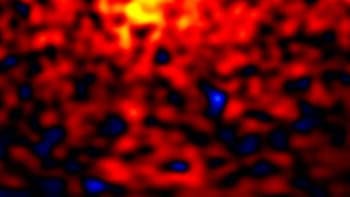
Researchers at Fermilab in the US have carried out the first laboratory experiment to look for a hypothetical form of matter known as “chameleon” particles. Although it failed to find any conclusive evidence for the existence of the particles — which may offer an explanation for dark energy — the team managed to set a lower limit on their mass.
Chameleon particles were first proposed in 2003 by Justin Khoury and Amanda Weltman at Columbia University in New York as a possible explanation for dark energy — the mysterious entity that accounts for 70% of the mass-energy content of the universe and is causing the expansion of the universe to accelerate. Chameleon particles are so named because like the lizards, they adjust their properties according to their local environment.
In places where the density of matter is relatively high, chameleon particles interact very weakly with other matter and only over very short distances, which could explain why we have yet to spot them here on Earth. However, in inter-galactic space where matter density is extremely low, the particles interact much more strongly with other matter and over very large distances. This means that the particles could be exerting a force that is pushing the universe apart.
Weltman (now at the University of Cape Town) told physicsworld.com that there are several ways to test for the presence of chameleons. Physicists could send two masses made of two different materials into space and watch if they are accelerated by gravity in different ways. The particles could also be spotted by how they affect light travelling to Earth from distant galaxies, although this approach is dependent on a number of unrelated assumptions.
Looking here on Earth
Weltman has now joined forces with Aaron Chou and colleagues at Fermilab to carry out the first search for chameleons here on Earth. The team used the lab’s GammeV experiment, which was originally built to search for the axion — another hypothetical particle that was introduced in the 1970s but has yet to be spotted (Phys. Rev. Lett. 102 030402).
GammeV is a steel-walled vacuum chamber that is a few centimetres in diameter and several metres long. If chameleon particles could be created within the chamber, many of them would be unable to escape. That is because the mass of a chameleon is proportional to the local density, which means that if one of the particles ventures near to the chamber walls, it becomes very massive. This mass gain would be offset by a loss of kinetic energy, meaning the particle would find it hard to pass through the chamber walls.
The team sought to create chameleons by firing a laser into a region of the chamber containing a very high magnetic field. The particles are expected to be created in such a region when two photons interact. After switching the laser off, the team use sensitive photomultipliers to look for the “afterglow” as the chameleons decay into photons.
Although GammeV did not detect any sign of chameleon particles, their absence in the experiment enabled the team to put a lower limit on the mass of the chameleon (as it exists in the vacuum chamber) at about 1 meV. This limit comes about because the light detectors are sensitive to thermal noise within the vacuum chamber, which was at room temperature.
Pressure drop
Chou said that the team is now looking at how to investigate greater masses — which he says could be done by cooling the experiment to cryogenic temperatures, which would have two positive effects. First, it would reduce the thermal noise, allowing lower levels of light to be detected. Second, cooling the chamber would also allow the experiment to be carried out under a much higher vacuum (about 10-10 Torr), which would boost the difference in density between the chamber and its walls by a factor of about 10,000. This should mean that fewer chameleons can escape the chamber, leading to a stronger signal.
Astrophysicist Malcolm Fairbairn of King’s College London told physicsworld.com that physicists have found it “difficult to come up with a working model for a chameleon field which can explain dark energy using either quantum field theory or string theory”. “This experiment is important for those people who want to create such models and will focus their ideas in the future”, he added.



